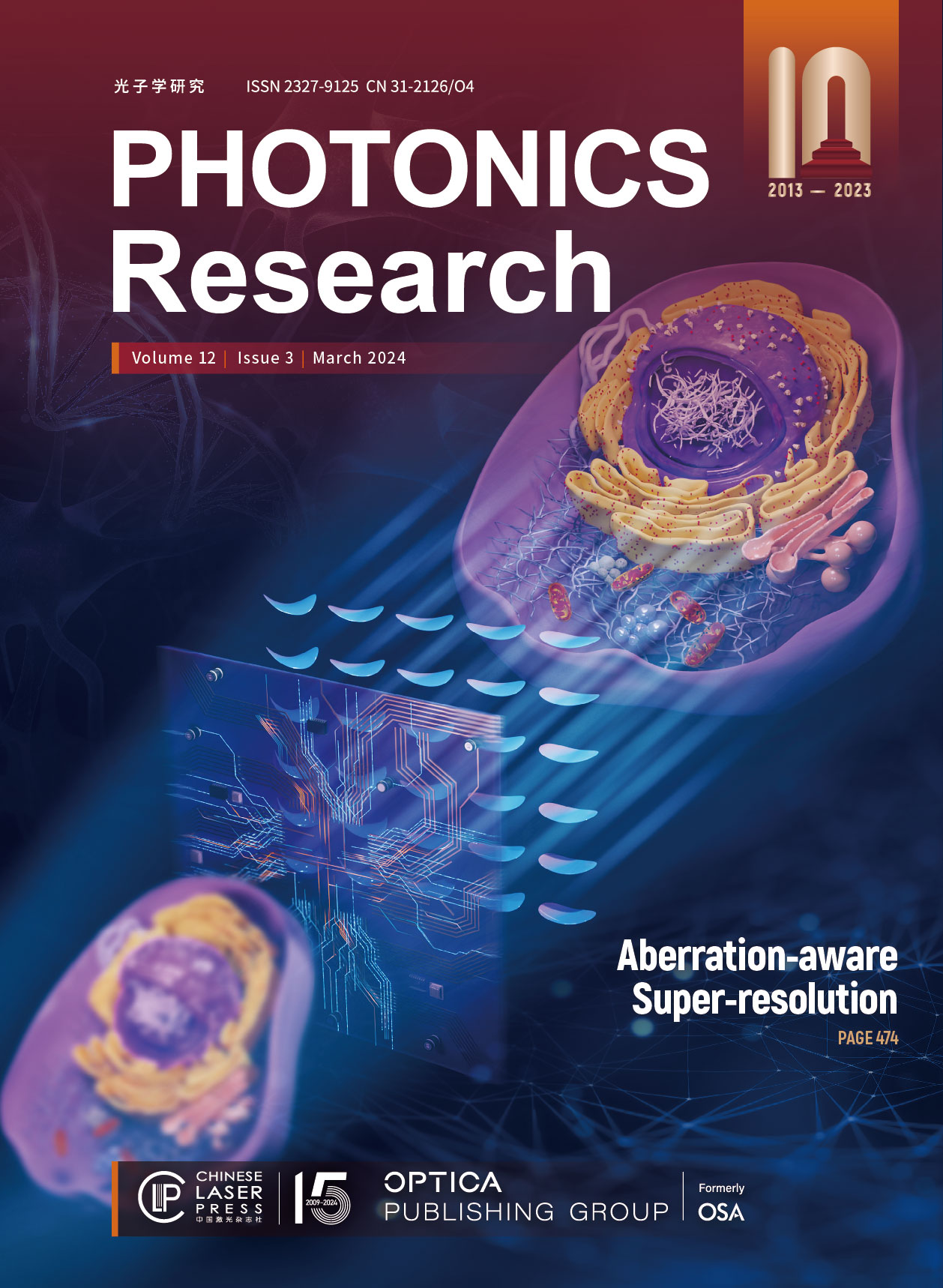- Publication Date: Feb. 29, 2024
- Vol. 12, Issue 3, A1 (2024)
- Publication Date: Mar. 01, 2024
- Vol. 12, Issue 3, A11 (2024)
We demonstrate a III-V-on-silicon-nitride mode-locked laser through the heterogeneous integration of a semiconductor optical amplifier on a passive silicon-nitride cavity using the technique of micro-transfer printing. In the initial phase of our study, we focus on optimizing the lasing wavelength to be centered at 1550 nm. This optimization is achieved by conducting experiments with 27 mode-locked lasers, each incorporating optical amplifiers featuring distinct multiple-quantum-well photoluminescence values. Subsequently we present a comprehensive study investigating the behavior of the mode-locking regime when the electrical driving parameters are varied. Specifically, we explore the impact of the gain voltage and saturable absorber current on the locking stability of a tunable mode-locked laser. By manipulating these parameters, we demonstrate the precise control of the optical spectrum across a wide range of wavelengths spanning from 1530 to 1580 nm. Furthermore, we implement an optimization approach based on a Monte Carlo analysis aimed at enhancing the mode overlap within the gain region. This adjustment enables the achievement of a laser emitting a 23-nm-wide spectrum while maintaining a defined 10 dB bandwidth for a pulse repetition rate of 3 GHz.
.- Publication Date: Mar. 01, 2024
- Vol. 12, Issue 3, A21 (2024)
- Publication Date: Mar. 01, 2024
- Vol. 12, Issue 3, A28 (2024)
- Publication Date: Feb. 08, 2024
- Vol. 12, Issue 3, 399 (2024)
- Publication Date: Feb. 08, 2024
- Vol. 12, Issue 3, 411 (2024)
- Publication Date: Mar. 01, 2024
- Vol. 12, Issue 3, 587 (2024)
- Publication Date: Feb. 26, 2024
- Vol. 12, Issue 3, 456 (2024)
- Publication Date: Mar. 01, 2024
- Vol. 12, Issue 3, 474 (2024)
- Publication Date: Mar. 01, 2024
- Vol. 12, Issue 3, 485 (2024)
- Publication Date: Feb. 08, 2024
- Vol. 12, Issue 3, 423 (2024)
- Publication Date: Feb. 26, 2024
- Vol. 12, Issue 3, 431 (2024)
- Publication Date: Feb. 26, 2024
- Vol. 12, Issue 3, 465 (2024)
- Publication Date: Mar. 01, 2024
- Vol. 12, Issue 3, 499 (2024)
- Publication Date: Feb. 26, 2024
- Vol. 12, Issue 3, 444 (2024)
- Publication Date: Mar. 01, 2024
- Vol. 12, Issue 3, 543 (2024)
- Publication Date: Mar. 01, 2024
- Vol. 12, Issue 3, 505 (2024)
- Publication Date: Mar. 01, 2024
- Vol. 12, Issue 3, 563 (2024)
- Publication Date: Feb. 08, 2024
- Vol. 12, Issue 3, 391 (2024)
- Publication Date: Mar. 01, 2024
- Vol. 12, Issue 3, 581 (2024)
- Publication Date: Mar. 01, 2024
- Vol. 12, Issue 3, 491 (2024)
- Publication Date: Mar. 01, 2024
- Vol. 12, Issue 3, 534 (2024)
- Publication Date: Mar. 01, 2024
- Vol. 12, Issue 3, 598 (2024)
- Publication Date: Mar. 01, 2024
- Vol. 12, Issue 3, 552 (2024)
- Publication Date: Mar. 01, 2024
- Vol. 12, Issue 3, 571 (2024)
- Publication Date: Mar. 01, 2024
- Vol. 12, Issue 3, 514 (2024)
- Publication Date: Mar. 01, 2024
- Vol. 12, Issue 3, 522 (2024)
About the Cover
The cover illustrates the concept of deciphering the wavefront aberrations from the acquired image itself via our deep learning methods, without the need of conventional wavefront sensor systems, to recover the high-quality super-resolution image. See Chang Qiao et al., pp. 474.
















